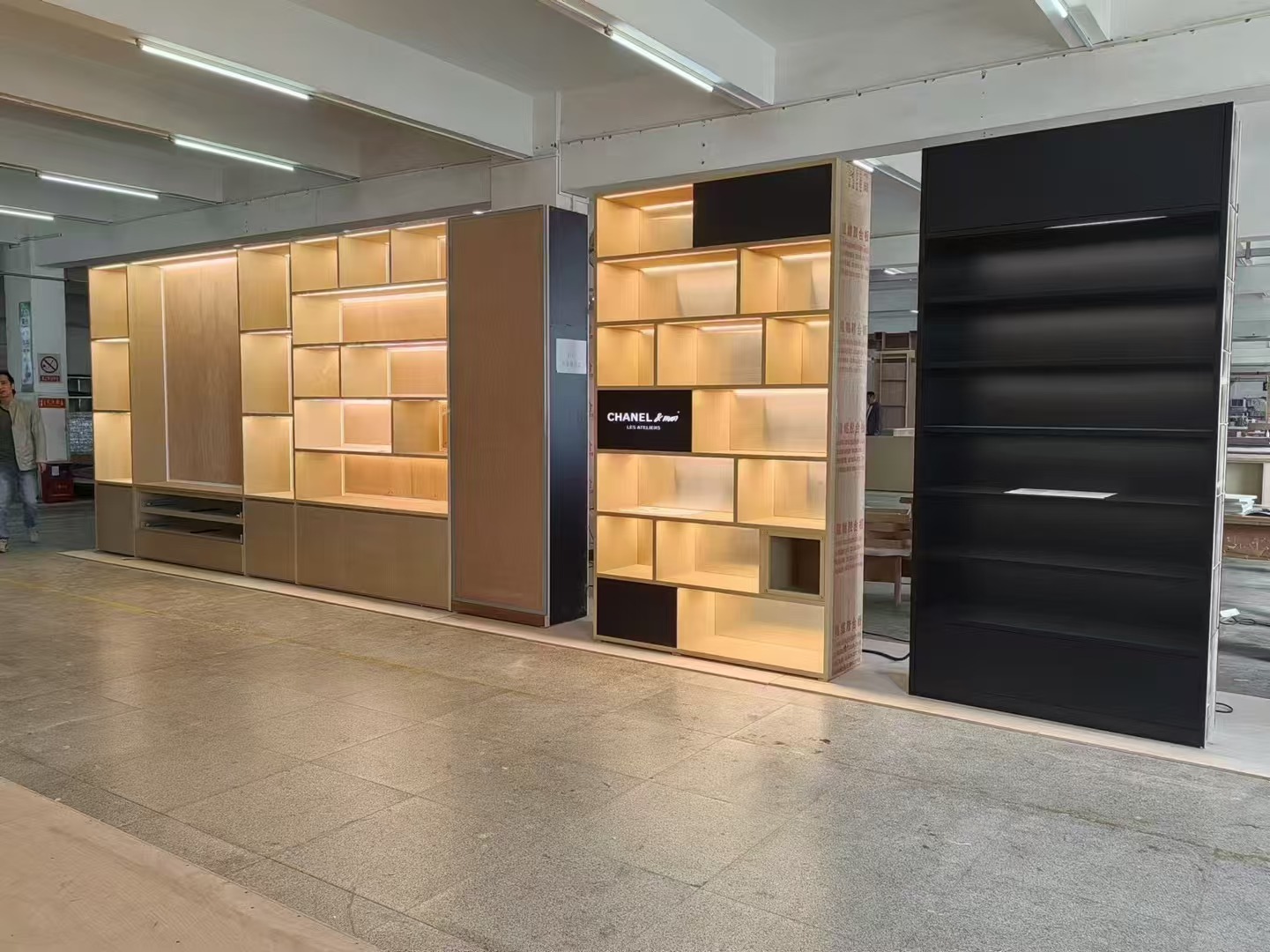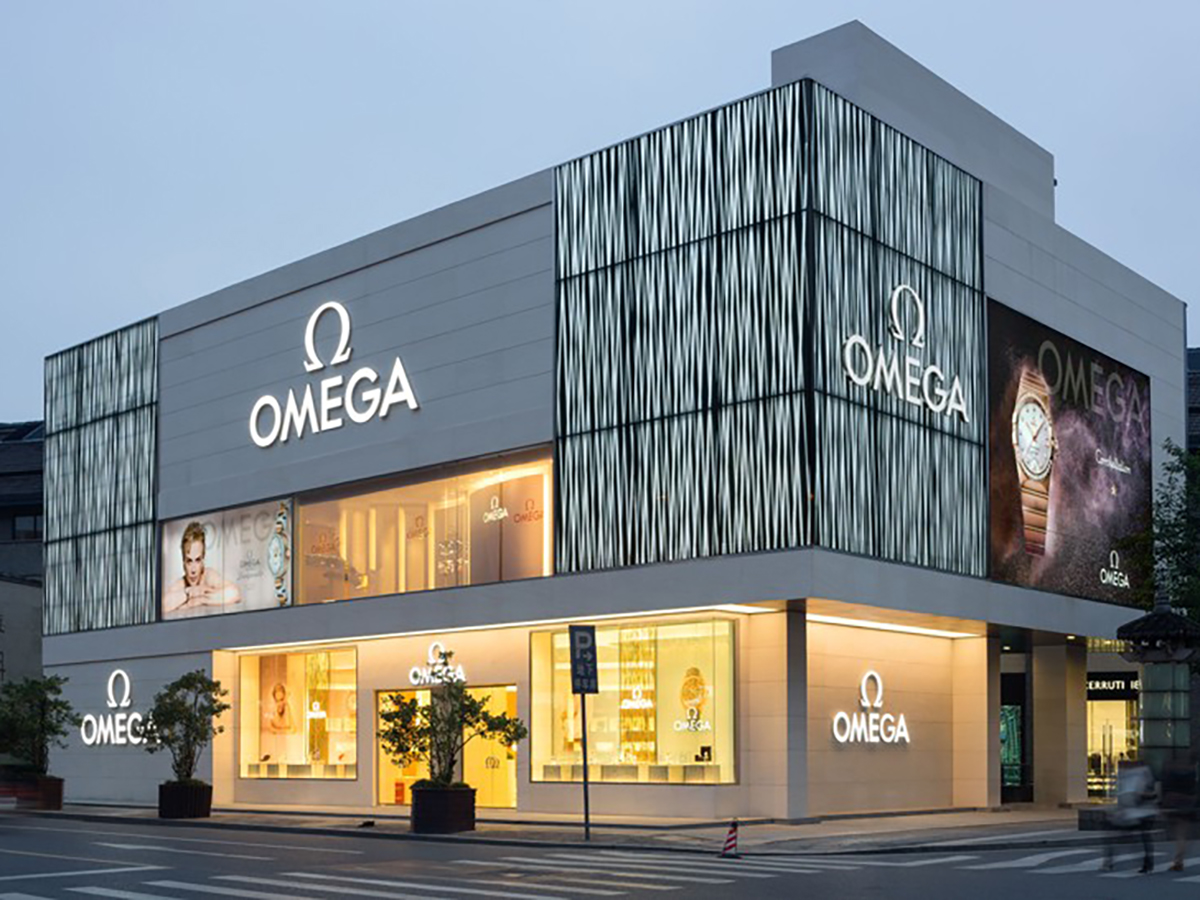Acrylic (PMMA), has long been a favorite material in the world of retail display design. Its popularity stems from a unique combination of properties that make it ideal for showcasing products in a variety of retail environments. In 2024, the versatility of acrylic is more relevant than ever, as retailers seek materials that not only enhance the visual appeal of their displays but also offer practical benefits like durability and customization.

1. Transparency: The Ultimate Showcase
One of the most compelling features of acrylic is its exceptional transparency. Acrylic offers a level of clarity that rivals glass, allowing light to pass through with minimal distortion. This makes it an ideal choice for retail displays where the product, rather than the display structure, should be the focal point.
- Showcasing Products: Acrylic’s transparency allows products to be showcased in their true colors and forms. Whether used in display cases, shelves, or signage, acrylic ensures that the product remains the star, undistracted by the material around it. This is particularly important in high-end retail environments, such as jewelry or luxury goods stores, where the aesthetic presentation is key to the customer experience.
- Enhancing Lighting Effects: The ability of acrylic to transmit light makes it a perfect material for displays that incorporate lighting effects. LED lights, for example, can be embedded within or behind acrylic panels to create glowing edges or highlight specific areas of a display. This not only adds a modern and sophisticated touch but also draws customers’ attention to key products.
- Versatile Applications: From window displays to in-store merchandising, acrylic’s transparency is versatile across different applications. It can be used in large panels to create entire display walls or cut into smaller shapes for intricate product holders, ensuring that every part of the display is both functional and aesthetically pleasing.
The transparency of acrylic not only makes it visually appealing but also offers practical benefits by ensuring that displays are lightweight and easy to handle, which is crucial in the fast-paced retail environment.

2. Durability: Built to Last
Durability is another significant advantage of acrylic, making it a preferred material in retail settings where displays must withstand constant use and potential wear and tear. Unlike glass, which can shatter easily, acrylic is known for its strength and resilience.
- Impact Resistance: Acrylic is much more impact-resistant than glass, making it less prone to breaking or cracking. This is particularly important in high-traffic retail environments where displays may be bumped or knocked. The durability of acrylic ensures that displays remain intact and looking new for longer, reducing the need for frequent replacements and repairs.
- Weather Resistance: Acrylic’s durability extends beyond physical impact to include resistance to environmental factors. It is UV-resistant, meaning it does not yellow or degrade when exposed to sunlight, making it suitable for both indoor and outdoor displays. This is especially beneficial for retailers with storefront windows or outdoor signage that need to maintain their appearance despite exposure to the elements.
- Scratch Resistance and Maintenance: Modern acrylic materials are often treated to be scratch-resistant, further enhancing their longevity. Additionally, acrylic is easy to clean and maintain. Unlike some other materials that require special cleaners, acrylic can be wiped down with a simple solution of water and mild detergent, keeping it looking pristine with minimal effort.
The combination of impact resistance, weather resistance, and low maintenance makes acrylic a durable option that can stand up to the rigors of the retail environment, offering long-term value for retailers.

3. Customization: Tailored to Perfection
Acrylic’s versatility extends beyond its physical properties to include a remarkable level of customization. This adaptability allows retailers to create bespoke displays that reflect their brand identity and meet specific merchandising needs.
- Malleability: Acrylic can be easily cut, molded, and shaped into a variety of forms, from simple geometric shapes to complex, custom-designed structures. This malleability allows retailers to create unique, eye-catching displays that stand out in the competitive retail landscape. Whether it’s a sleek, modern display stand or a whimsical, branded product holder, acrylic can be tailored to fit any design vision.
- Color Options: While clear acrylic is the most common, it is also available in a wide range of colors and finishes. Retailers can choose from opaque, translucent, frosted, or even mirrored acrylic to match their store’s color scheme or to create a specific ambiance. Custom colors can also be matched to brand colors, ensuring consistency across all retail elements.
- Printing and Branding: Acrylic’s surface is conducive to various printing techniques, allowing for high-quality graphics, logos, and text to be applied directly to the material. This makes it an excellent choice for branded displays, where the retailer’s logo or marketing message needs to be prominently featured. The ability to print directly on acrylic also means that promotional messages can be easily updated, providing flexibility for seasonal changes or new product launches.
- Integration with Technology: As retail becomes increasingly digital, acrylic displays can be integrated with technology to enhance the customer experience. For example, acrylic panels can be used in conjunction with digital screens or augmented reality (AR) elements, creating interactive displays that engage customers in new and innovative ways.
The customization options provided by acrylic give retailers the freedom to create displays that are not only functional but also highly personalized, ensuring that their brand stands out in a crowded market.

Conclusion
Acrylic is a versatile material that offers significant advantages in retail display design, particularly in terms of transparency, durability, and customization. Its ability to showcase products with clarity, withstand the demands of the retail environment, and be tailored to specific design requirements makes it an invaluable asset for retailers looking to create impactful and lasting displays. As retail continues to evolve in 2024, acrylic remains a top choice for those who want to combine aesthetic appeal with practical functionality, ensuring that their displays not only attract attention but also endure over time.

















